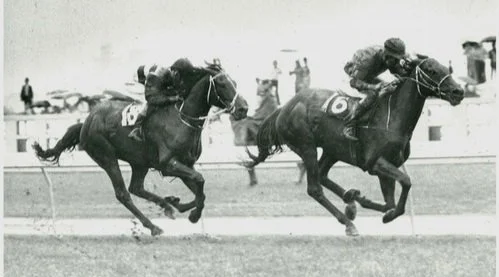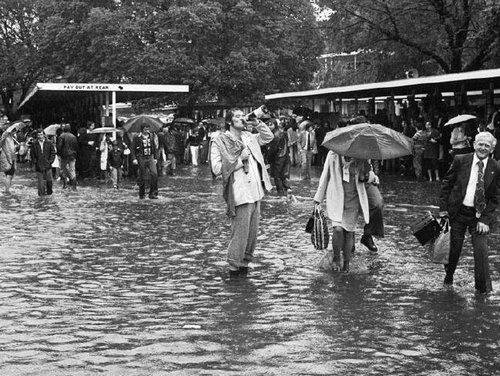There were 78,500 people at Flemington on Melbourne Cup day 1976. Those who are still living, carry indelible memories of their visit to the historic course on the day mother nature threw a tantrum.
Intermittent rain right through October had deterred people from spending up on new Cup outfits, and the crowd was down by many thousands on expected figures.
Almost 25 mm of rain fell in Melbourne on the Monday night, but the weather improved considerably by Cup morning.
I didn’t expect to be required in Melbourne on Cup day 1976. My station 2GB had arranged to take Bert Bryant’s call from its sister station 3UZ in Melbourne, but there was a curious turn of events a week before the Cup.
A small group of radio stations headed by 2SM in Sydney, had no network affiliations interstate and asked 2GB if they could help out by providing an independent Cup commentary.
Live TV coverage of horse racing in Australia was still in its infancy. The O-1O Network didn’t commence its 4 day coverage of the Melbourne Cup carnival until 1978 and were exclusive providers for many years.
In 1976 it appeared there would be no live TV coverage of the Cup, but a snap decision was made by the Nine Network late in the previous week to cover the great race. I assumed they would take the commentary from Radio 3UZ or course commentator Joe Brown of the ABC.
I received a message on arriving at Flemington that my call would be taken by Channel 9. It’s interesting to note that this was the last Melbourne Cup to be covered live by the Nine Network and the reason makes interesting reading.
When the VRC invited tenders from TV Networks in 1978, it was stipulated that the Melbourne Cup alone was not available. The controlling body wanted every race over the four days to go to air. Kerry Packer wasn’t prepared to suspend some high earning programmes and that was the end of Channel Nine’s interest in the Melbourne Cup carnival. It also meant that I never got to call another Cup.
A Sydney friend, the late Richard Messenger was with me in the broadcast box when we noticed the first storm clouds gathering on the horizon. We took little notice at first, but boy they were moving quickly. Within minutes the light was failing rapidly, the thunder was starting to roll, and the lightning was jumping all over the sky.
It was just after 2pm and hundreds of spectators who’d been gathering on the lawns started to move off in search of shelter. Others stayed where they were, hoping the storm would bypass Flemington. The clouds were low and menacing and appeared more green than black.
Many lucky racegoers had the good sense to take an umbrella to the track. This was the scene as the storm unleashed - courtesy Australian Racing Museum.
It was eerie, it was intimidating, and it was scary - and then the tempest announced its arrival. I’ve never seen rain like it. The noise on the roof was deafening and I saw a few sheets of galvanised iron sagging under the sheer weight of water.
It might have been only 5 or 6 minutes. I really don’t know. It seemed like 5 or 6 hours, and then it was gone. The scene it left behind is something I haven’t seen since on an Australian racecourse. The mounting enclosure resembled a lake and there were huge pools of water filling every indentation on the lawns.
A couple of larrikins soon appeared, one in a wetsuit and flippers, the other in a pink Easter bunny suit, and both frolicked in the water.
Any other race meeting would have been called off immediately, but Stewards made the decision to go ahead, with a revised start time for the Cup. An amazing drainage system at Flemington did its job so well, that the big race started only 7 minutes past advertised post time.
Astonishing scenes in the Flemington betting ring moments after the storm had passed.
All those who called the race were comfortable enough as they came down the straight the first time and were not too concerned as they went down the back straight. From the lateral view the colours were still recognisable.
I remember a freakish incident as they raced down the back, involving the wonderful New Zealand horse Battle Heights. The gelding had run second to How Now in the Caulfield Cup, before missing a place in the Cox Plate. Stepping up to 2 miles on a heavy track in the Melbourne Cup, he looked a realistic chance.
Jockey Larry Olsen told me only recently, that the horse was balanced and relishing the heavy ground as they raced down the back, but suddenly lost his rhythm and got very rough in his action. Larry discovered later that the gelding’s hind fetlock bandages had unravelled in the mud and were trailing out behind Battle Heights - an incident that could have caused serious consequences.
It wasn’t until they passed the 600 metres and started to swing for home that all commentators realised they had a struggle on their hands. The fronts of the jockey’s jackets were completely covered in brown slush. The symbols of recognition had disappeared.
It was “hit and miss” for all callers until they got to the 200 metres mark, where the lateral view of the colours was again visible. I recall seeing the number six saddle cloth on Van Der Hum as he started to draw clear. I had a quick peep at the race book to make sure I had the right horse, as he powered through the mud to beat Gold And Black, Kythera, Reckless and Happy Union.
Van Der Hum gets the better of Gold and Black in the closing stages of the 1976 Cup. Gold and Black was to win the great race the following year - courtesy Australian Racing Museum
Because of his well-documented ability on heavy tracks, Van Der Hum started favourite at 9/2.
He was nominated for the Cup by trainer and part owner Leo Robinson, just in case Melbourne had a wet spring. Van Der Hum didn’t race at all as a two and three year old, and he’d won only three ordinary races before being nominated for the Cup. Connections got a shock when VRC Handicapper Kevin Ryan gave him 53 kgs in the Melbourne Cup, but the prospect of a wet Melbourne carnival prompted them to make the trip.
He arrived on a plane which also carried sheep and cattle and touched down at Tullamarine well after midnight on the Friday night. Van Der Hum had only a few hours in his temporary stable accommodation, before being taken to Caulfield for the Herbert Power Hcp (2400 metres). Making light of a hurried and arduous trip, he destroyed the opposition in the Herbert Power winning by 7 lengths. He finished a creditable third in the Caulfield Cup, before missing a place in the Cox Plate won brilliantly by Surround.
The Flemington storm was “heaven sent” for Van Der Hum, who must have been giggling in his stall as the rain bucketed down. For jockey Bob Skelton, a Melbourne Cup win consolidated his reputation as a master jockey in two mile races. He won five Wellington Cups including three straight on Great Sensation, two Auckland Cups, and later two Perth Cups on Magistrate. He went close to another Melbourne Cup in 1986, when second on Rising Fear to Sheik Hamdan’s At Talaq. Bob rode well over 2000 winners before turning to training on a 16 acre property at Mornington.
Bob Skelton's own mother wouldn't have recognised him as he unsaddled Van Der Hum.
Bob Skelton was one of nine children and one of five jockeys in the family. W.D. “Bill” Skelton had spectacular success in NZ and earned recognition in Australia with two Group 1 wins on the brilliant Dary’s Joy. Frank Skelton rode two NZ Cup winners before weight beat him, and Errol rode plenty of winners before succumbing to weight problems.
Bob once told me an amazing story about his youngest brother Max, who rode successfully in Singapore and Malaysia. He returned to NZ in 1976, only to sustain dreadful injuries in a track accident. He was diagnosed paraplegic after being struck in the back by a horse.
A few months later he was sitting in his wheelchair watching brother Bob ride Van Der Hum in the Melbourne Cup, when he suddenly felt one of his toes twitch. That was the first exciting moment of a rapid and complete recovery for Max, who shortly after started a riding school in Christchurch.
Bobby Skelton remained in Victoria when he called time on his riding career in 1988, and trained successfully from his Mornington farm for a number of years. He lost a battle with cancer in 2016 aged 81. He was an inductee in both the NZ Sports Hall Of Fame and the NZ Racing Hall Of Fame, and was awarded the MBE in the Queen’s Birthday Honours of 1978. I met him one morning in the 1980’s at Larry Pickering’s Central Coast training property in NSW. To share his reminiscences for an hour or two was an absolute delight.
There were not enough punters around to give Van Der Hum the reception a Melbourne Cup winner deserves - courtesy Australian Racing Museum.
I’ll always remember Bobby Skelton as the mud bespattered two mile specialist who guided the plain looking gelding Van Der Hum through the Flemington slush to win the race most NZ horsemen revere. I’ve seen many a storm make many an unwelcome incursion into the conduct of an important race meeting. I’ve never seen a brute like the one that dumped on Flemington’s hallowed turf forty six years ago. That green monster would have decimated any other race meeting in the world on the day. But the Cup went on regardless and created a legend which will be talked about long into the future.
What the heck said this philosophical punter! A swig of champagne might warm me up.
(Banner image - With the track an absolute quagmire you'd wonder how Van Der Hum and Gold and Black could have all four feet off the ground at the finish of the 1976 Melbourne Cup.)







